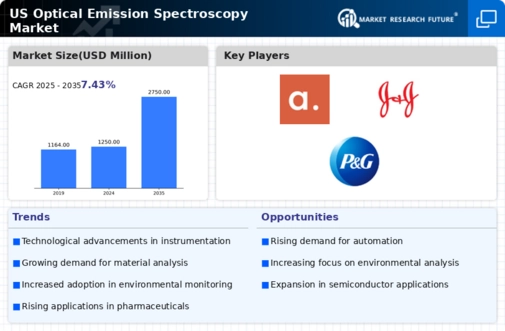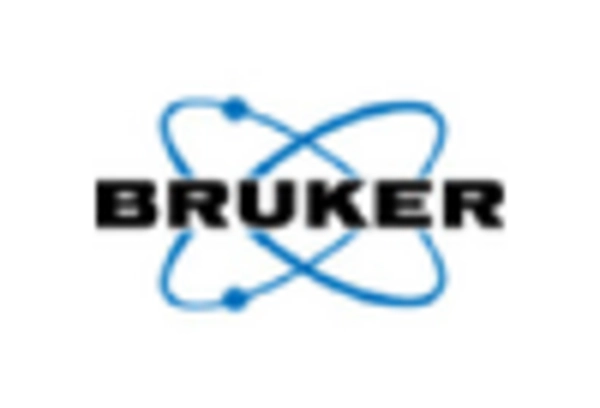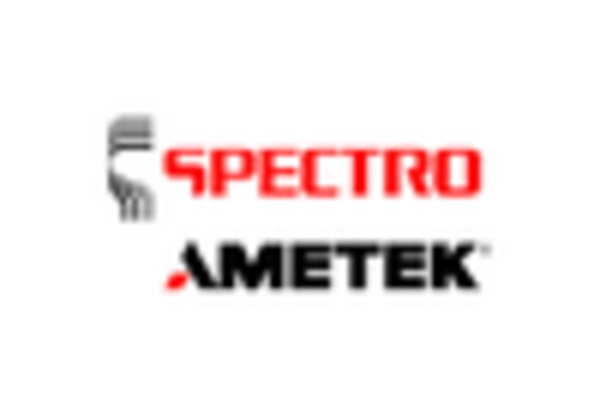Increased Focus on Quality Control
The optical emission-spectroscopy market is experiencing heightened attention towards quality control processes across various industries. As companies strive to maintain high standards in product quality, the demand for reliable analytical techniques has surged. Optical emission-spectroscopy provides precise elemental analysis, making it an essential tool for quality assurance in sectors such as metallurgy and electronics. The market is projected to grow significantly, with estimates suggesting an increase of around 6% annually. This focus on quality control not only enhances product reliability but also helps companies comply with industry standards, thereby driving the adoption of optical emission-spectroscopy technologies.
Rising Demand in Manufacturing Sectors
The optical emission-spectroscopy market is experiencing a notable surge in demand, particularly within the manufacturing sectors. Industries such as automotive, aerospace, and electronics are increasingly adopting advanced analytical techniques to ensure product quality and compliance with stringent regulations. This trend is reflected in the projected growth of the market, which is expected to reach approximately $1.5 billion by 2026. The need for precise material characterization and quality control is driving manufacturers to invest in optical emission-spectroscopy technologies, thereby enhancing operational efficiency and reducing production costs. As these sectors continue to expand, the optical emission-spectroscopy market is likely to benefit from increased adoption rates and technological advancements that cater to specific industry needs.
Technological Integration with Automation
The optical emission-spectroscopy market is increasingly integrating with automation technologies, enhancing its appeal across various industries. The advent of automated systems allows for high-throughput analysis, reducing the time and labor associated with traditional methods. This integration is particularly beneficial in sectors such as pharmaceuticals and materials science, where efficiency and accuracy are paramount. The market is expected to witness a growth rate of approximately 7% annually as companies seek to streamline operations and improve productivity. By leveraging automation, the optical emission-spectroscopy market is likely to attract new users and applications, further solidifying its position in the analytical instrumentation landscape.
Growth in Research and Development Activities
The optical emission-spectroscopy market is significantly influenced by the growth in research and development (R&D) activities across various scientific fields. Academic institutions and research organizations are increasingly utilizing optical emission-spectroscopy for material analysis, environmental monitoring, and forensic investigations. This trend is underscored by the substantial funding allocated to R&D, which has seen an increase of over 10% annually in recent years. The ability of optical emission-spectroscopy to provide rapid and accurate results makes it an invaluable tool in laboratories. As R&D continues to thrive, the optical emission-spectroscopy market is poised for expansion, driven by the demand for innovative solutions and advanced analytical capabilities.
Emerging Applications in Environmental Monitoring
The optical emission-spectroscopy market is witnessing a growing interest in its applications for environmental monitoring. With increasing concerns regarding pollution and environmental sustainability, industries are turning to optical emission-spectroscopy for real-time analysis of air and water quality. This shift is supported by regulatory frameworks that mandate stringent monitoring of pollutants, thereby creating a robust market for optical emission-spectroscopy solutions. The market is projected to grow at a CAGR of around 8% over the next five years, driven by the need for compliance with environmental regulations and the demand for sustainable practices. As environmental awareness rises, the optical emission-spectroscopy market is likely to see further innovations tailored to meet these challenges.
















Leave a Comment